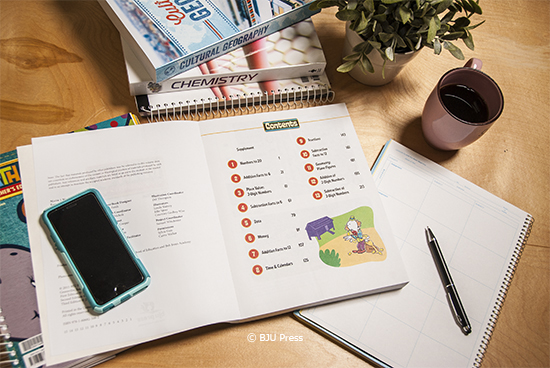
Have you ever wondered if your homeschooled child is falling behind? One of the challenges of homeschooling is that it is difficult to know whether or not your child is on track academically. I found this to be true in my own homeschool.
My two oldest children are different in almost every way possible. Their personalities are different, their hair color is different, their likes and dislikes are different—and their academic strengths are different. My firstborn learned to read quickly. When we sat down to read the phonics stories in K5, she always read them with ease and had no trouble answering the accompanying comprehension questions. By the end of K5, she was reading short chapter books. I had no worries about her academic performance—I knew she was excelling.
But then my second daughter started K5. Unlike her older sister, she struggled through those K5 phonics stories and word family lists. No matter how much we practiced, she didn’t seem to be catching on. And I began to get worried. Was she falling behind? Did she need a reading tutor? A different curriculum?
An Objective Measurement
Standardized testing was so helpful to me in this situation because it provided me with an objective measure of my daughter’s academic performance. Instead of comparing her performance with only her sister’s, the results compared my daughter with a much larger group of other kindergartners (called a norm). I felt like she was falling behind, but her standardized test results indicated that she was actually right on track.
A Sense of Assurance
You could compare doing standardized testing with getting a checkup at the doctor’s office. At those doctor’s visits, I’m always interested in knowing if my children are staying on their growth curve. Sometimes it doesn’t seem to me that they have gained much weight or gotten much taller, so it is always reassuring to me when my pediatrician shows me that they are still developing normally.
It’s the same with standardized testing. Such tests aren’t a perfect measurement, so they shouldn’t be the only assessment tool you use to evaluate your child’s academic performance. Throughout the year, you can also use chapter tests, section quizzes, lesson interactivity, and projects to evaluate learning. But yearly standardized testing can be very beneficial, especially when you need assurance that your child is staying on track.
Help in Identifying Academic Weaknesses
Standardized test scores are also useful because they help you discern if your child is falling behind. Since standardized tests are no-stakes tests, you don’t have to be afraid of poor test scores—they don’t mean that you’re a homeschool failure, just as a medical diagnosis doesn’t mean that you’ve failed as a parent. And low test scores don’t mean that your child is somehow unintelligent. They should only be viewed as opportunities for growth and improvement. If you need help knowing how to reinforce academically weak areas, your local HomeWorks consultant or a BJU Press representative is available to assist you.
My children and I really look forward to standardized testing each spring. For me, it’s an opportunity to give them an academic checkup. For them, it’s a chance to get together with friends and enjoy special snacks and extra playtime. Keep an eye out for Jenna’s next post, in which she will share some ideas for making testing fun and stress-free so it can be a great experience for everyone.

